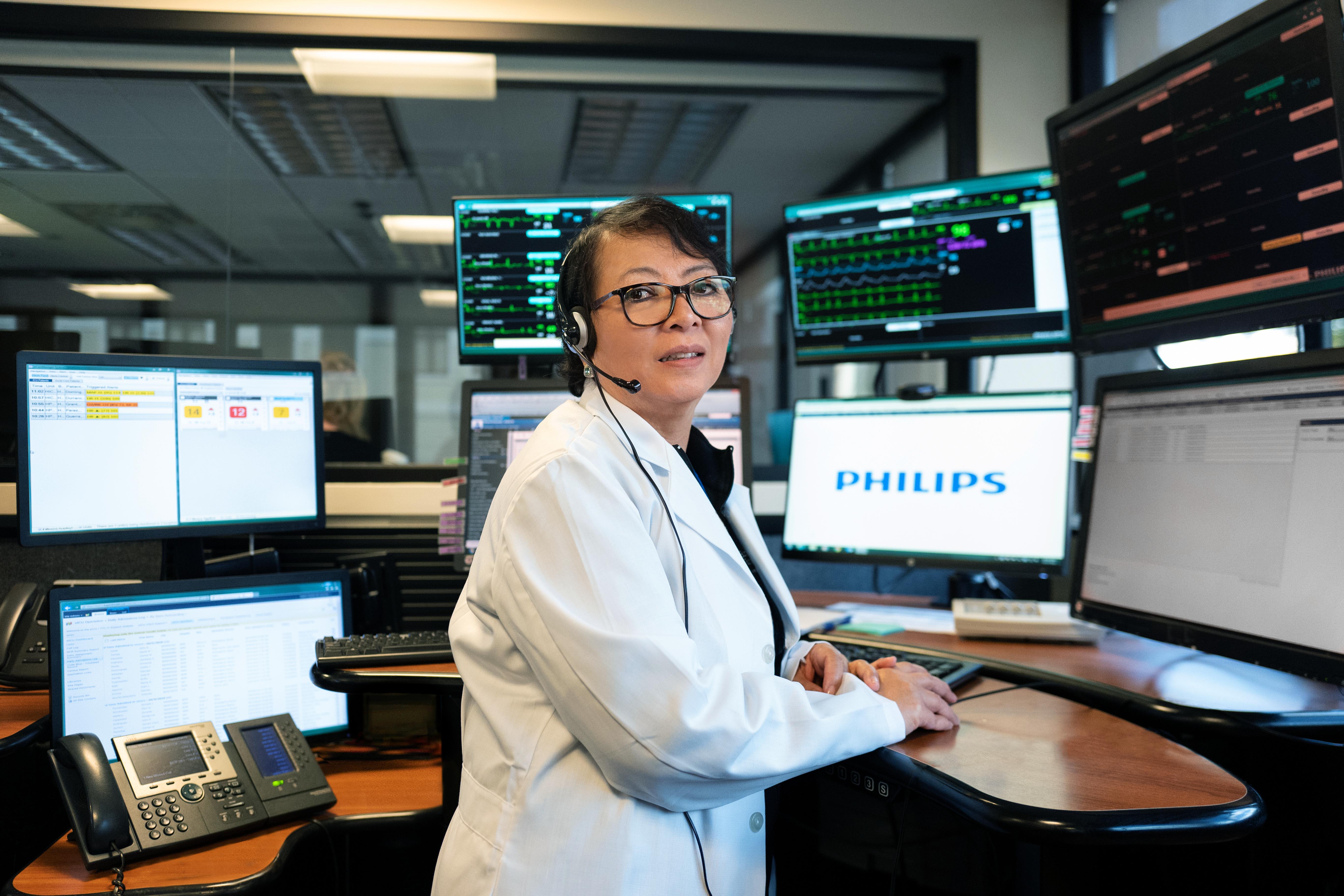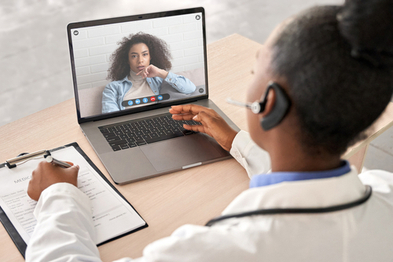Right now we’re in an interesting time, where we are suddenly thrust into virtual meetings, online learning, and social distancing. We cover our faces to help others. Fresh out of quarantine, we’re figuring out everything in new ways.
How can technology help? Aside from some popular solutions to needing to stay at home more, like helping people to work from home more easily, and helping kids go to school virtually, can technology help with the main problem – the novel coronavirus (SARS-CoV-2) and COVID-19?
The answer is yes, and in a few pretty huge ways.
I recently had the honor of interviewing the Chief Innovation Officer & Strategy Officer of Philips, Jeroen Tas, via video from the Netherlands, and asked him this very question. How can tech help directly with the COVID-19 pandemic crisis?
Below are a few ways.
Artificial Intelligence to Help Track Symptoms, Treatments, and Outcomes
As more data is uncovered about how COVID-19 affects people based on age, gender, race, weight, comorbidities, and other things, and as we better track symptoms, treatments, outcomes of treatments, and learn more, we create large data sets. Once these reach a critical mass, we will be able to use artificial intelligence (AI) to perceive helpful patterns humans can’t see because the data sets are too large.

“We already use AI to detect patterns in things like images and genomics,” noted Tas. “As we create more complex data sets, healthcare can become much more personalized around health care drivers, we can stream vitals, and detect and possibly prevent things like mental and behavioral health components.”
Virtual ICU Assistance and Community (Partly-Virtual) Medical Centers
What if a team of doctors in one major city experiencing a large spike in cases and hospitalizations could have support from doctors, nurses, and other ICU specialists in another major city where there were far fewer cases at the moment? Right now, when spikes in COVID arise, the staff in the impacted city (think NYC in the Spring) can get overwhelmed, stressed, and worn out quickly. Plus, there are upper human limits on how many people one person can attend to.

Explains Tas, “Using an eICU [electronic Intensive Care Unit] support center, the hospital team can see many more beds simultaneously. It can help the medical team see who needs immediate help, help with triage, and reduce the load on overtaxed hospital staff.”
If technology can help a team from another city monitor patients and alert the local team when one patient needs more attention, it can help make valuable, limited human medical resources more effective.
In some areas, another solution is currently being tested that could also be applied to something like COVID-19. Standalone, small, community medical centers can provide a controlled environment for routine testing or procedures. If a patient is within normal ranges, they are all set. If a remote specialist is needed, they can be called upon to provide additional diagnosis virtually. See an example below of how the US Department of Veteran’s Affairs (VA) is already using this to reach far more, rural veterans.
Medical Sensors at Home
Combined with artificial intelligence, another upcoming trend is to be able to monitor more COVID-19 patients at home using sensors. If any measurements fall outside of “normal” ranges, a specialist can be notified and further action can be taken. Philips, for example, is looking into adding pulse oximeter measurement (which shows a person’s oxygen saturation and can be a hallmark of an upcoming increase in COVID-19 severity) into their sensors. As more information can be monitored and tracked, and more information is indexed and processed, eventually programs using AI could potentially virtually and remotely track thousands or millions of patients globally, alerting medical staff when something changed in a critical way so they can act. As Tas puts it, “You can use computer power for a lot of it before human intervention is needed.”
And, “eventually, running algorithms for a million people can catch outliers at home, where they are often more comfortable than in hospitals, at far less expense. COVID is fairly unpredictable so far, but as we get more context, we can capture more data about how different combinations of symptoms, for example, were treated, using all this [anonymized] streamed data. So that eventually, you can have a database where AI can help you search for 50 cases nearly identical to one you are seeing in a patient right now,” adds Tas.
Augmented Reality and Virtual Reality
Currently being used for medical training and even to assist with surgery, augmented reality tools like Microsofts’s Hololens mixed reality headsets can help train people how to asses and treat coronavirus or other medical conditions. The Hololens 2 is being piloted by Philips for use in surgery right now. Hololens and HoloAnatomy software are also being used by Case Western Reserve University for remote medical student training, which can help students see the human body more completely and virtually, almost like the real thing.
Telehealth
Providing virtual video appointments, or telehealth, is a great democratizer for patients. For both safety and convenience, virtual doctor’s appointments can remove barriers like transportation, time away from work or family, expense, and avoiding the need to come into contact with others. It can often help high-demand medical specialists talk to, assess, and treat many more patients in a day than they might otherwise be able to do. It can also help specialists from locations physically very far away from a patient to be able to help rare or unique cases where a patient would normally not have access to that specialist’s expertise.

Bonus: Faster, More Effective Global Teamwork
Because of some technology we’re already familiar with, this pandemic is different than others in how quickly research teams can work together globally on breakthroughs. Video conferencing and meetings with shared results presentations and data, artificial intelligence to sort through past diseases and their treatments and commonalities with this novel coronavirus, and a willingness of many people, organizations, and countries to work together have sped things up exponentially. In fact, the Milken Institute’s COVID-19 Treatment and Vaccine Tracker lists hundreds of possible treatments and vaccines, which stages of trials there are in, and their results to date.

While this pandemic crisis has created challenges we might not have easily imagined, one positive is that medical technology, including emerging technology, is enabling us to help more people in less time. And as it continues to improve, it will not only help with this pandemic, but likely with many other types of diseases and medical challenges big and small.


